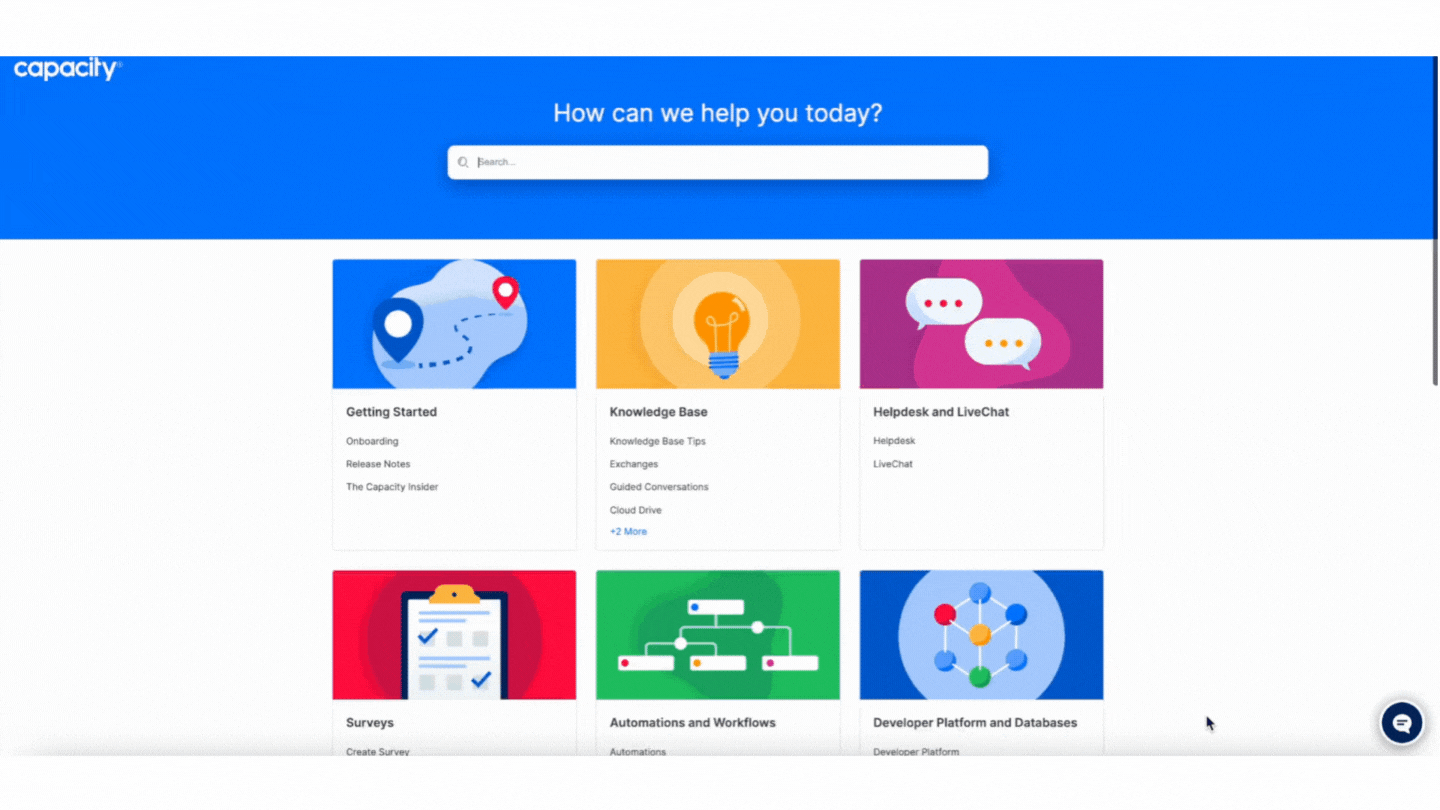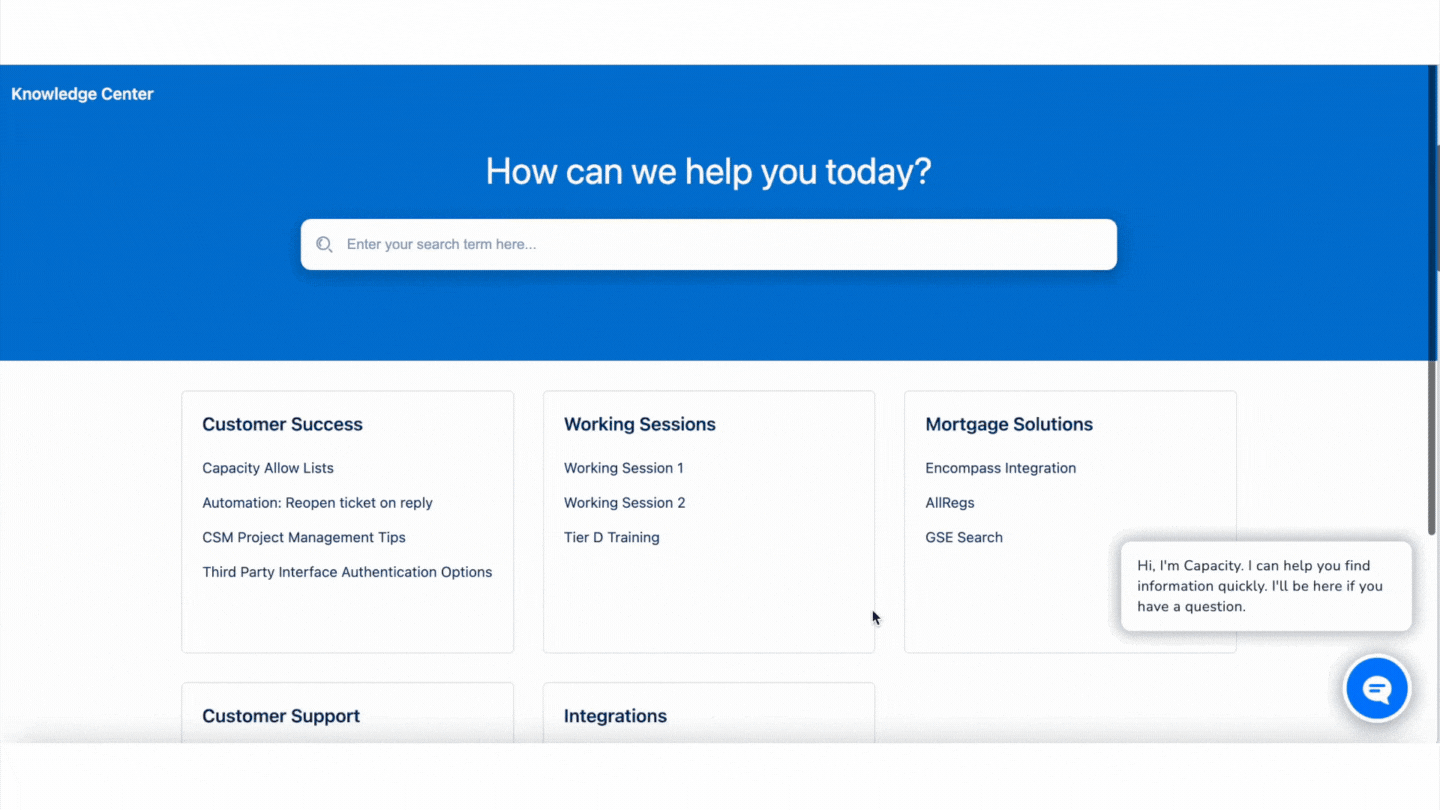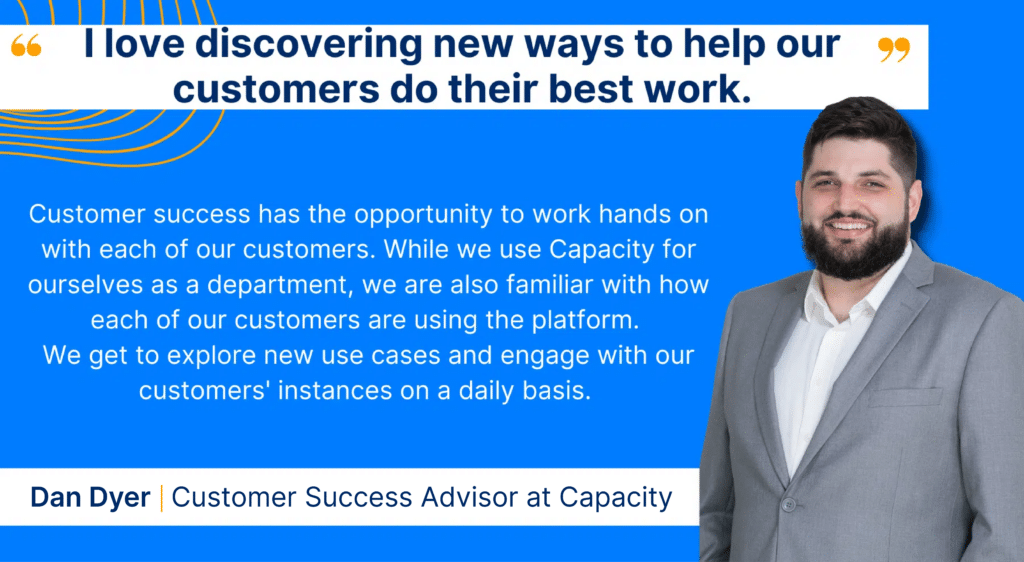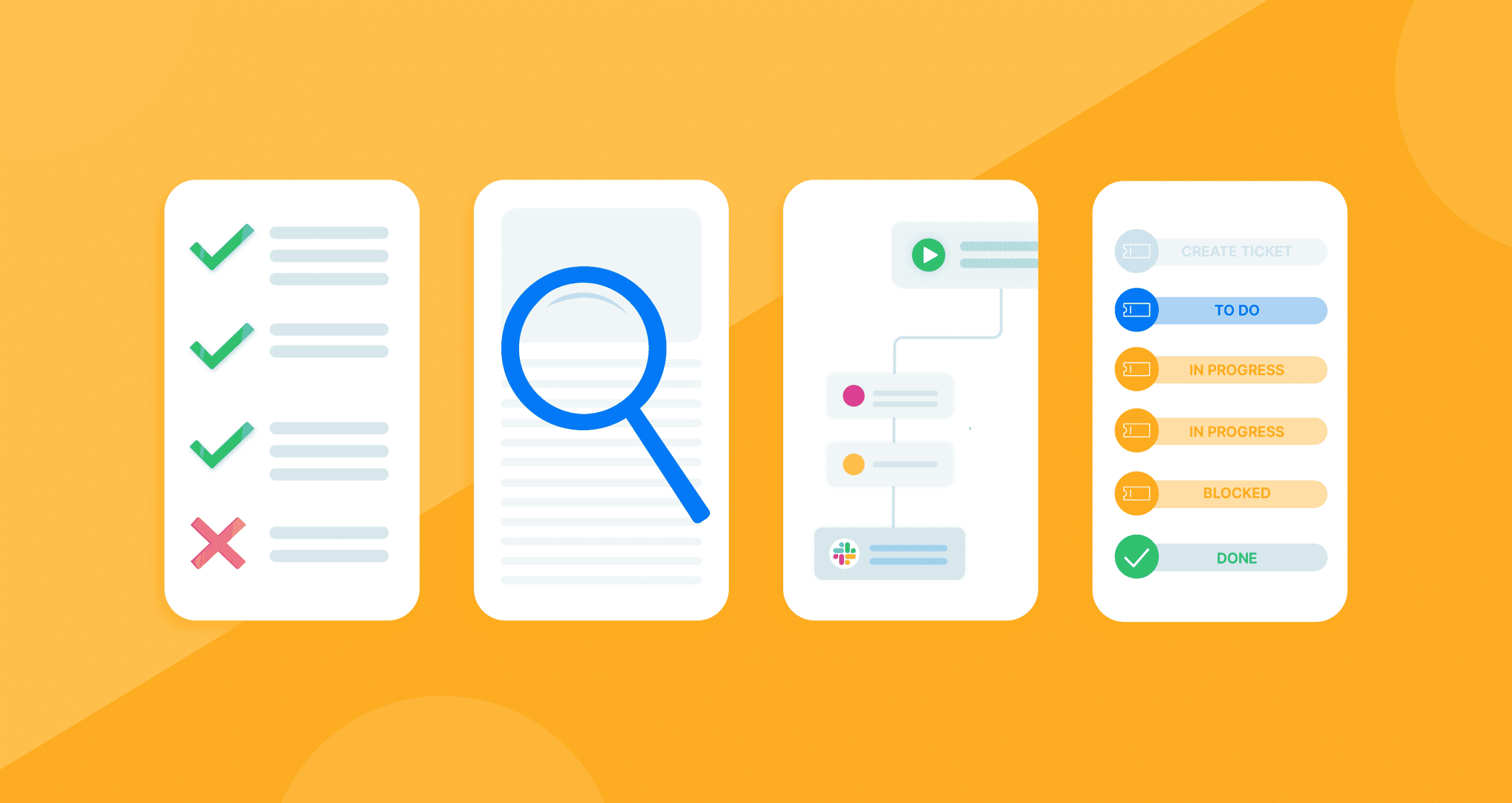Here at Capacity, we believe our platform has the power to transform businesses everywhere, including our own. We like to say we drink our own champagne: the entire Capacity team uses the Capacity platform for self-service. This reduces time spent on tedious tasks and processes, like requesting PTO, so our team can focus on strategic projects and help our customers do their best work.
We’ve highlighted a few different ways that Capacity uses Capacity. Today, let’s focus on the Customer Success team.
Articles and Knowledge Base
The Capacity platform was designed for self-service, powered by the Knowledge Base. As the central “source of truth” for all company knowledge, the KB enables instant, easy access to important data and documents. Meanwhile, Articles within the KB record more codified knowledge.
Together, The Knowledge Base and Articles work together to support AI functions like the Chatbot, so our team can spend more time on strategic work.
Our Customer Success team supports both internal and external-facing knowledge bases. While we offer a general support site to our users so they have a central place to find information on the product, our CS team has their own internal site to store and share knowledge—making AI customer support as seamless as can be.

Hear first hand from Sami McCann, Sr. Customer Success Manager at Capacity, how the KB and internal Articles save hours of time and frustration:
“As Customer Success Managers, we often run into issues that require multiple people or team involvement. While colleagues are always eager to help in those cases, we end up taking valuable time away from their work, which in turn can push back timelines for client requests.
Our team used to post these solutions in our CSM Slack channel or discuss in our weekly syncs. However, we learned that we don’t remember these solutions 3 months down the road and digging through Slack only to find that we discussed on a un-recorded call means we have to loop back in the team members that helped solve the issue 3 months prior.
Now that we have an internal CSM site, we create articles on these problems with corresponding solutions, so that next time a CSM runs into the same issue 6 months later, they can solve the problem themselves (or know exactly who to involve) in just a few minutes—without needing to distract other team members.”
-Sami McCann, Senior Customer Success Manager

Analytics and Surveys
Capacity’s robust platform has many features, including ways to measure customer feedback and usage. With Capacity Surveys, you can send interactive questionnaires to customers and receive their opinions and feedback. Similarly, Capacity’s Analytics Dashboards track important metrics such as bot usage and the percentage of questions deflected by our AI.
The Customer Success team uses Surveys to help our clients figure out what areas of content they should focus on while building their knowledge base. They also use CSAT surveys to measure, track, and optimize our AI customer support efficacy.
Meanwhile, Analytics are a crucial way to determine how successfully an implementation is going. The Customer Success team uses Analytics as success criteria for customer engagement, knowledge base health, and helpdesk effectiveness. Analytics provides the information needed to determine where customers should spend their time, what can be automated at their organization, and how to optimize in the future.

Helpdesk and Session Replay
Managing inbound inquiries can be a challenge, especially when trying to determine the exact error or issue a customer is experiencing. In the rare instances that Capacity doesn’t have the answer to a question, our interactive Helpdesk makes it easy for users to filter, organize, and analyze incoming tickets.
The Customer Success team uses the Capacity Helpdesk to manage all customer support requests. When our clients have questions or need assistance, they can reach the helpdesk via email or through the web concierge on our support page. Whether it’s a bug they’ve encountered or additional training for new members, the Customer Success team is there to help.
“Capacity’s Helpdesk improves our customers’ experiences.
Every question a Capacity user asks on our support site comes directly to the Helpdesk. We use the Helpdesk everyday to tackle tickets and solve customer issues. If a problem or question comes in that could be a question for another customer in the future, we will put it in our Knowledge Base so our bot can deflect that problem from ever becoming a ticket again.
It saves our team time, and increases customer satisfaction.”
-Lukas Adams, Customer Support Technical Specialist
When more in-depth support is needed, Session Replay can showcase bugs that the team has encountered or that clients have mentioned. Our CS team can see a recreated simulation of what actions our users have taken and what’s going wrong. This makes reporting bugs, trying to replicate them, and ultimately resolving them a much easier process for both customers and the CS team.
Workflows and Integrations
With Workflows, teams can streamline everyday processes and boost productivity. A key part of the CS team’s Workflow set-up is client onboarding. Workflows can jumpstart an automated onboarding process, send emails on behalf of team members, and even create support tickets automatically—saving both our team and our customers hours of time.
To streamline even more processes, the Customer Success Engineers have designed a way to organize client records with CapacityDB, the Developer Platform, and Workflows. The workflows run overnight, so the Customer Success team can start each day with a current, accurate record of client instances.
Another unique aspect of Capacity’s platform is its ability to integrate with hundreds of different applications, including Slack. Every time something goes wrong with the product, the Customer Success Engineering team receives an instant Slack alert in a dedicated channel. Exact error messaging and push notifications enable the CS team to intervene in real time, as soon as problems arise.
Want to learn more?
These are only a few of the many ways our CS team leverages Capacity to support and empower our customers. To learn more about how AI customer support can reduce painful processes and help your team do their best work, request a demo today.











































